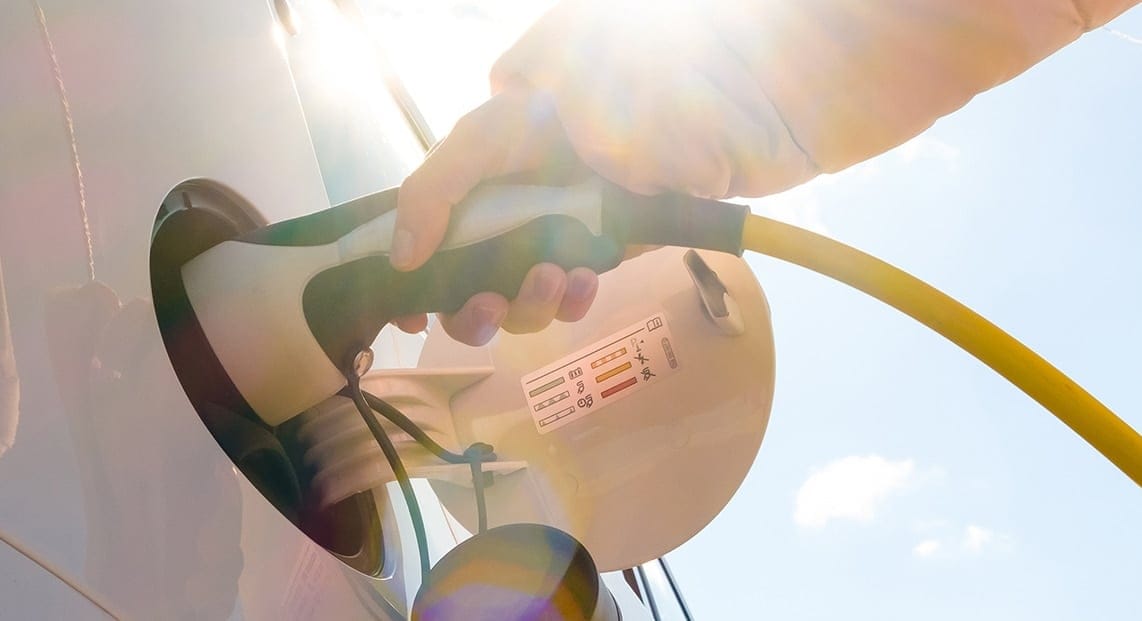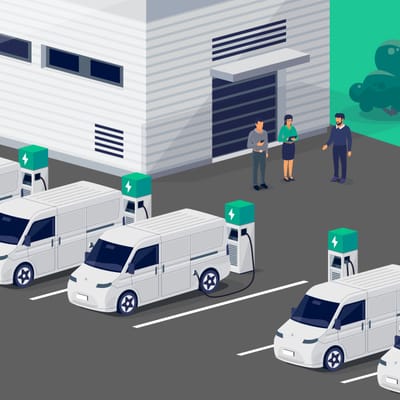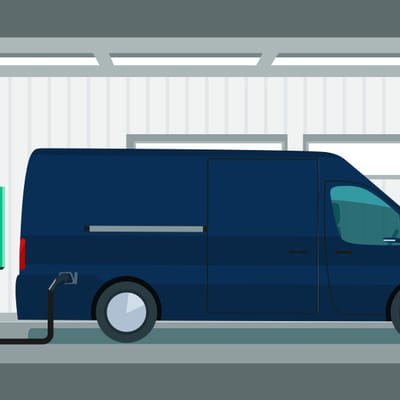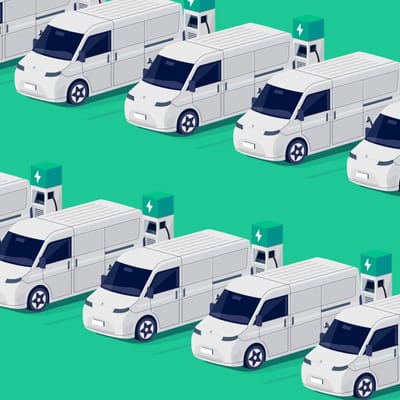- SolutionsWith a strategic solution that works for you and your business, you can unlock revenue-generating opportunities and begin managing your fleet as an investment.Overview
- About UsWhen Holman was founded in 1924, we set something positive in motion. Our consistent focus on people and our commitment to integrity make us who we are today.Overview
 Join Our TeamWe’re not just in the automotive business, we’re in the people business. Join us for the ride.Browse Careers
Join Our TeamWe’re not just in the automotive business, we’re in the people business. Join us for the ride.Browse Careers
Depot Solutions for Centrally-parked EV Fleet Charging
Holman Marketing
August 24, 2022

If you are ready for your fleet to adopt electric vehicles – specifically all-electric or plug-in hybrid EVs, you also need to be considering your best charging options. And to ensure continued fleet productivity, your charging solution needs to be in place before your first EV arrives.
If your fleet vehicles return to a central location at the end of each work shift, depot charging is a great choice. It brings the security and convenience of charging your fleet on your own property. It works for EV types ranging from passenger vehicles to heavy trucks and buses. And most depot charging setups have control systems that schedule charging sessions during off-peak hours for reduced TCO.
EV Depot Charging
There’s a lot of planning and prep work that goes into setting up a depot charging solution. It also requires collaboration with stakeholders from various areas of your company. Here’s a breakdown of all that’s involved.
Setup Options
The most prevalent depot charging setup today uses level 2 and level 3 connectors. Level 2 charging is more economical, and level 3 is the faster option.
Decision Factors
Ahead of launching a depot charging solution, you will need to navigate many decision points with multiple stakeholders. Naturally, this starts with determining the best application of electric vehicles for your fleet in order to maintain productivity and meet your customers’ expectations. After you’ve made your vehicle choices and determined depot charging to be a viable solution, then the array of decision factors spans out. You will have to:
- Determine the charger and connector types needed for the vehicle models you selected.
- Create a charging schedule that coordinates vehicle downtime with charging unit availability.
- Assess your facility grounds to determine where your chargers can be supported and accessed.
- Design the charging depot layout to be scalable with EV growth.
- Collaborate with local utility or third-party energy providers to plan electric load requirements* and potential cost hedging.
If you’re looking for support through the process of building your depot charging solution, Holman and our partner Electrada, can help you. Electrada is a trusted Charging-As-A-Service (CaaS) solutions provider. Their data integration with Holman simplifies the billing process for you as they pass the electric fuel costs on a per kWh basis through to your Holman monthly fleet invoice.
Integrated Fleet Management
Holman’s data integration with Electrada also allows you to access your charging data (time of day, rate, duration, cost, etc.) through the Holman Insights system. As such, you can conduct analyses along with the rest of your fleet vehicle and driver data for full visibility of fleet costs and performance.
Other Energy Considerations
- Depot charging can be combined with energy generation systems, such as wind or solar, and energy storage systems.
- You can supplement depot charging with a plan for optimized public charging (which is the subject of our next blog on EV charging).
- Holman can offer advice on how to apply for grants to cover some or all of your upfront capital costs, where applicable.
Have you’ve been following our series of blogs about EV charging systems? It includes an overview of at-home solutions.
You can also subscribe to The Morning Brake newsletter from Holman with news and trends from all corners of the auto industry, including sustainability.
Related Resources
Explore more related industry news, insights, and developments.









